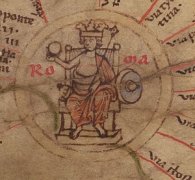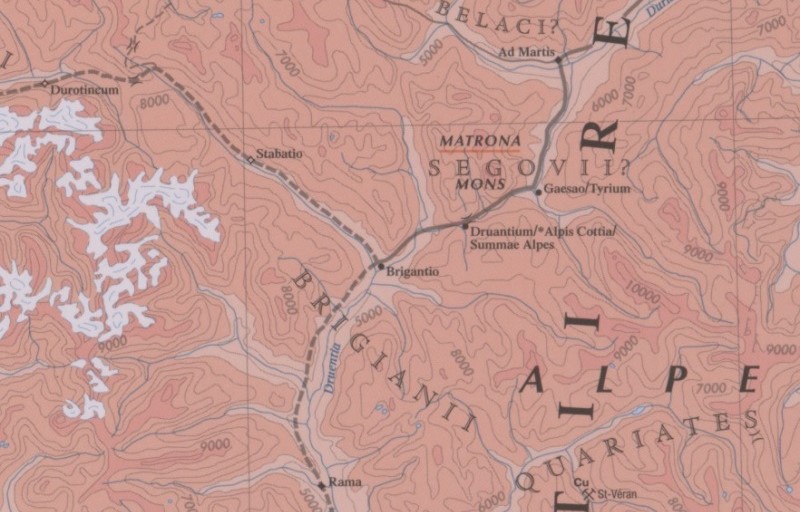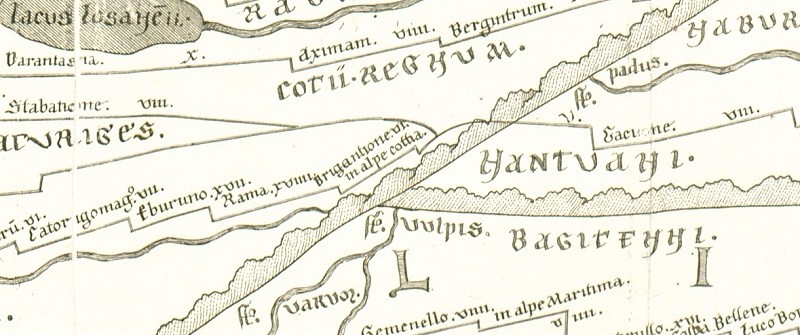
Tabula Peutingeriana – Pantalla individual
| Topónimo (simplificado): | Brigantione |
| Nombre (moderno): | Notre-Dame de Briançon |
| Imagen: |  Al detalle de la imagen |
| Topónimo antes | XVIIII Rama |
| Topónimo después | XI In alpecottia (In Alpe Cottia) |
| Imagen alternativa | --- |
| Imagen (Barrington 2000) |
 |
| Imagen (Scheyb 1753) |
 |
| Imagen (Welser 1598) | --- |
| Imagen (MSI 2025) | --- |
| Área: | Galia/Germania |
| Tipo de topónimo: | Topónimo sin símbolo |
| Cuadrícula: | 2B3 |
| Color del topónimo: | negro |
| Tipo de viñeta: | --- |
| Itinerario: | Brigantione (341,5; 357,3), mansio Byrigante (555,11) inde ascendis Matronam (556,1) |
| Nombres alternativos (diccionarios): |
|
| Nombre A (RE): | Brigantio [1] |
| Nombre B (Barrington Atlas): | Brigantio (17 G2) |
| Nombre C (TIR / TIB /otros): | Brigantio (TIR L 32, 40) |
| Nombre D (Miller): | Brigantione |
| Nombre E (Levi): |
|
| Nombre F (Ravenate): | Brincatione (p. 63.46) |
| Nombre G (Ptolemaios): |
|
| Plinius: |
|
| Strabo: |
|
| Datación del topónimo en la TP: | --- |
| Fundamento para la datación: |
|
| Comentario al topónimo: |
Kommentar (Talbert): |
| Bibliografía: |
Miller, Itineraria, Sp. 102. 228; |
| Última elaboración: | 30.12.2024 10:51 |
Cite this page:
https://www1.ku.de/ggf/ag/tabula_peutingeriana/trefferanzeige_es.php?id=3279 [zuletzt aufgerufen am 04.11.2025]